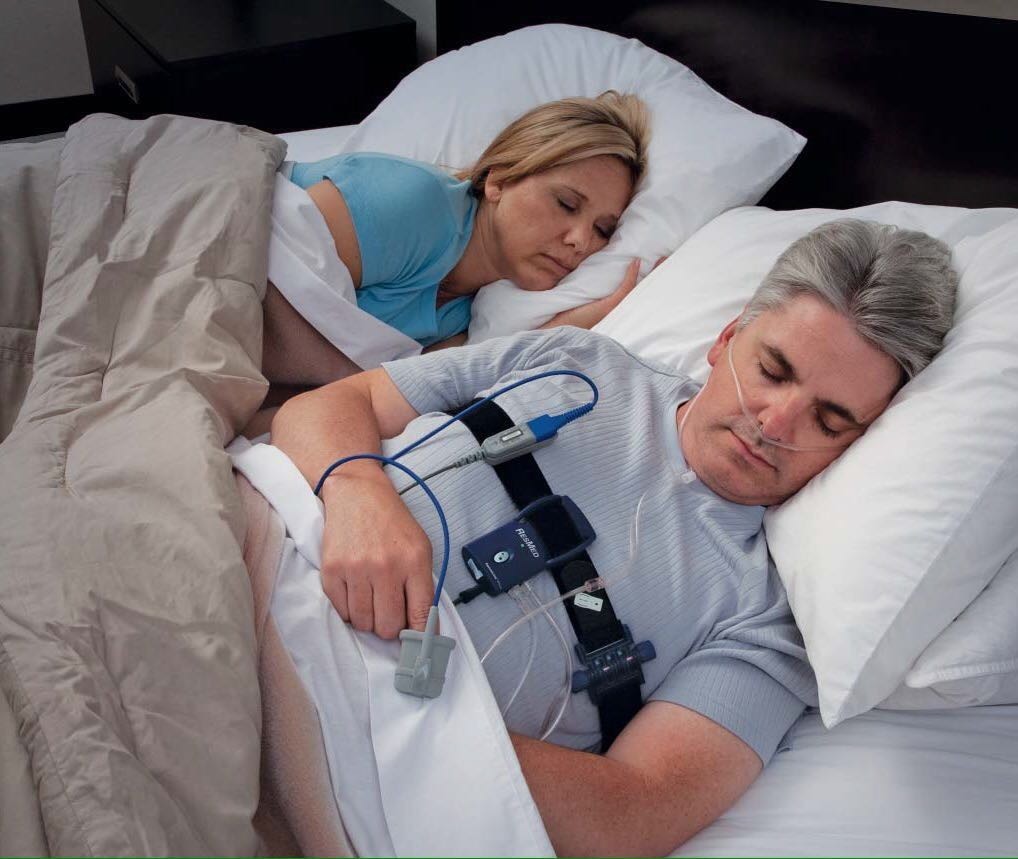
Take your sleep test in your natural environment, your bed!
With the recent news that for obstructive sleep apnea (OSA), the American Academy of Sleep Medicine gives in-home testing their seal of approval, people are wondering how in-home sleep apnea testing works, if it's covered by insurance, and why they should get tested. Let's shed some light on obstructive sleep apnea; it's risks, symptoms, treatments, and anything you might want to know about home testing.
What is Obstructive Sleep Apnea?
OSA is a common disorder that affects a reported 32 million Americans. It is when an individual experiences shallow breathing or stops breathing for 10 seconds or longer each time. These pauses can occur more than 30 times in one hour before normal breathing resumes, usually with a loud snort or choking sound.
What are the dangers of letting OSA go untreated?
Aside from daytime drowsiness, daily fatigue and exhaustion, letting sleep apnea go untreated opens you up to many serious and dangerous health issues. Sleep apnea has been shown to contribute to high blood pressure, heart disease, Type 2 diabetes, metabolic syndrome, liver problems, impaired immune system, Alzheimer’s disease, weight gain, asthma, and acid reflux. It has also been linked to a five-times greater risk of car and work related accidents due to drowsiness.
How does it work?
The first step if you suspect that you or someone you know is suffering from sleep apnea is to speak with their physician, dentist or get more information or referral to a sleep physician or certified dentist thru APP-NEA. Home sleep apnea testing equipment, simple to use gives board-certified sleep medicine doctors the information they need to make a sleep apnea diagnosis. Those who use the at-home test wear special equipment which collects information about they breathe while they sleep. These devices specifically measure your breathing and blood oxygen level. Some also measure your heart rate or other information about your body.
You usually wear the equipment for one or two days. The sensors are attached via Velcro, elastic, and sometimes stickers. The kit typically consists of a chest sensor to measure breathing effort, a finger sensor to measure blood oxygen level, and a breath sensor which is placed under the nose to measure airflow and snoring.
This is a much more convenient method than the in-lab monitored sleep tests which were previously the norm for OSA testing.
Who should use an at-home test?
Those who are likely to have moderate-to-severe sleep apnea and no other significant medical considerations are ideal candidates for the home test. Those who do not have an elevated risk of OSA, may have another sleep disorder, or have pulmonary diseases, neuromuscular diseases, or congestive heart failure should not use an at-home sleep test.
How do you know if you may have moderate-to-severe sleep apnea? Here are a few common symptoms which you may want to discuss with your doctor:
How can I obtain an at-home test?
If you think you may have sleep apnea, talk to your primary care physician or dentist. If your sleep screening indicates that you may, they can either give you the equipment to take home or order one for you or refer you to a sleep medicine physician. Your insurance company will likely cover most of the cost (anywhere between $250-500) if you have met their "medical necessity" criteria.
How do I treat OSA if I have it?
Treatment will primarily be based on your sleep physician's recommendations, the severity of your OSA, and your tolerance for treatment methods. One of the most popular methods of treatment is an oral appliance, also known as Mandibular Advancing Devices (MAD), have been shown to be extremely effective in treating sleep apnea. The device resembles a mouth guard and moves the lower jaw forward to open the airway wider during sleep. MAD’s are specially made by certified sleep apnea dentists. You can learn more about MAD’s here.
For severe sleep apnea, Continuous Positive Airway Pressure (CPAP) machines are recommended. Each night, patients wear a face mask that “forces air into the nasal passages at high levels to overcome obstructions in the airway and stimulate normal breathing.” While it is the most prescribed treatment for OSA, it is not a workable treatment for many patients. Complaints of claustrophobia, ear pressure, discomfort due to the facemask, noisy machines, and the inconvenience and embarrassment of the machine caused over half of all users to use their machines below guidelines and what’s recommended (a minimum of four hours per night) or not wear it at all.
For severe cases, surgery may be required. However, sometimes weight loss can help with symptoms or remedy the problem altogether (in very mild sleep apnea cases).
If you suspect you have sleep apnea, contact your physician or dentist as soon as possible. Not only will you sleep better and awake refreshed each morning, but you will also decrease your risk of many life-threatening conditions.